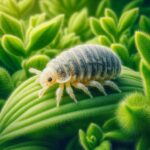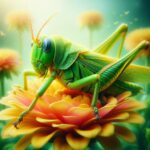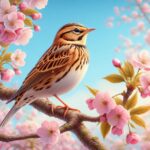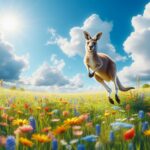Louse: A Comprehensive Overview Scientific Name: Pediculus humanus (for human lice) Common Name: Louse Family: Pediculidae Habitat: Human hair, fur of mammals, and bird feathers Diet: Blood-sucking parasite Lifespan: 1–2 months Conservation Status: Not applicable (due to their parasitic nature, they are not considered a threatened species) Introduction A louse […]
Category Archives: Animals
Animals are living creatures that can move, grow, and need food and water to survive. They come in many shapes and sizes, and some live on land, while others live in water or fly in the sky. Animals can be pets, wild, or farm animals. They have different ways of getting food, such as hunting, grazing, or eating plants. All animals have different characteristics and behaviors.
Locust
Locust: A Comprehensive Overview Scientific Name: Caelifera (general suborder) Common Name: Locust Family: Acrididae Habitat: Grasslands, deserts, and agricultural areas Diet: Herbivore (grasses, leaves, and crops) Lifespan: Around 3 to 5 months in the wild Conservation Status: Varies by species (some are considered pests, others are not endangered) Introduction The […]
Llama
Llama: A Comprehensive Overview Scientific Name: Lama glama Common Name: Llama Family: Camelidae Habitat: Mountainous regions of South America, especially the Andes Diet: Herbivore (grasses, shrubs, and other vegetation) Lifespan: 15 to 20 years in the wild, up to 30 years in captivity Conservation Status: Least Concern (IUCN Red List) […]
Lion
Lion: A Comprehensive Overview Scientific Name: Panthera leo Common Name: Lion Family: Felidae Habitat: Grasslands, savannas, and open woodlands Diet: Carnivore (large ungulates, smaller mammals, and scavenging) Lifespan: 10 to 14 years in the wild (up to 20 years in captivity) Conservation Status: Vulnerable (IUCN Red List) Introduction The lion […]
Leopard
Leopard: A Comprehensive Overview Scientific Name: Panthera pardus Common Name: Leopard Family: Felidae Habitat: Grasslands, forests, savannas, mountains, and rainforests Diet: Carnivore (mostly medium-sized mammals, birds, and occasionally reptiles) Lifespan: 12 to 17 years in the wild Conservation Status: Vulnerable (IUCN Red List) Introduction The leopard (Panthera pardus) is one […]
Lark
Lark: A Comprehensive Overview Scientific Name: Alauda arvensis (Common Lark) Common Name: Lark Type: Bird Size: 6.3 to 8.3 inches (16 to 21 cm) in length Weight: 0.7 to 1.5 ounces (20 to 43 grams) Diet: Omnivore (seeds, insects, and plants) Habitat: Grasslands, farmlands, meadows, and open fields Lifespan: 3 […]
Koala
Koala: A Comprehensive Overview Scientific Name: Phascolarctos cinereus Common Name: Koala Type: Mammal Size: Typically 24 to 33 inches (60 to 85 cm) in length Weight: Males: 14 to 30 pounds (6 to 14 kg); Females: 8 to 15 pounds (4 to 7 kg) Diet: Herbivore (primarily eucalyptus leaves) Habitat: […]
Kangaroo
Kangaroo: A Comprehensive Overview Scientific Name: Macropus Common Name: Kangaroo Type: Mammal Size: Ranges from 3.3 to 8 feet (1 to 2.5 meters) in length, including the tail Weight: Can range from 40 to 200 pounds (18 to 90 kilograms), depending on the species Diet: Herbivore (primarily grasses and shrubs) […]
Jellyfish
Jellyfish: A Comprehensive Overview Scientific Name: Cnidaria (phylum) Common Name: Jellyfish Type: Invertebrate Size: Ranges from a few millimeters to 2 meters (6.5 feet) in diameter Weight: Varies; can range from a few grams to hundreds of kilograms Diet: Carnivorous (mostly plankton, small fish, and crustaceans) Habitat: Oceans, seas, and […]
Jay
Jay: A Comprehensive Overview Scientific Name: Garrulus glandarius (European Jay) Common Name: Jay Type: Bird Size: 12 to 15 inches (30 to 38 cm) in length Weight: 3.5 to 6.5 ounces (100 to 180 grams) Diet: Omnivorous (mainly seeds, nuts, fruits, insects, and small vertebrates) Habitat: Forests, woodlands, and gardens […]










